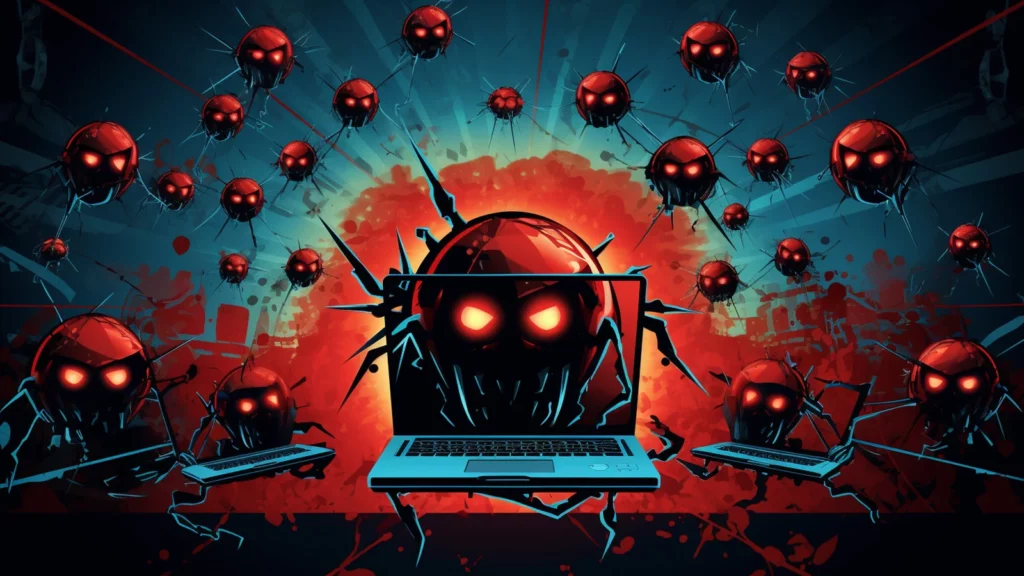Ransomware: A Billion-Dollar Cybercrime Industry
Ransomware—malicious software that encrypts data and demands payment for its release—has grown into a billion-dollar criminal enterprise. In 2023, ransomware attacks surged across the United States, targeting hospitals, energy providers, and local governments. One of the most notable examples remains the Colonial Pipeline attack in 2021, which disrupted fuel supplies and exposed critical vulnerabilities in essential infrastructure.
Recent campaigns have increasingly targeted water treatment facilities, educational institutions, and police departments, often demanding cryptocurrency payments. Cybercriminal groups like Conti and LockBit have refined their strategies, employing double extortion techniques where they not only demand payment but also threaten to leak sensitive data if their demands are unmet. These groups exploit vulnerabilities in outdated systems, phishing attacks, and poorly secured networks to execute their schemes.
The proliferation of RaaS platforms has made ransomware accessible to a wider range of malicious actors. For as little as a few hundred dollars, individuals with minimal technical expertise can purchase preconfigured ransomware kits, complete with user-friendly interfaces and customer support. This democratization of cybercrime has significantly increased the number of attacks, overwhelming both small businesses and large organizations.
Botnets: The Silent Cyber Threat
Botnets, networks of compromised devices under a hacker’s control, represent an insidious and growing danger. These networks, comprising everything from personal computers to Internet of Things (IoT) devices, can carry out large-scale attacks without detection. Botnets remain dormant until activated, making them a silent but significant threat.
One example is the “Mozi” botnet, which specifically targets IoT devices such as smart thermostats, cameras, and routers. These devices can be hijacked to launch Distributed Denial of Service (DDoS) attacks, mine cryptocurrency, or serve as gateways for deeper infiltration into networks. This highlights the vulnerabilities within the rapidly expanding IoT ecosystem.
More concerning is the rise of botnets like “PsyloNet,” which targets SCADA (Supervisory Control and Data Acquisition) systems that manage critical utilities such as electricity, water, and transportation. A coordinated attack using such botnets could disrupt essential services on a national scale, posing a severe risk to public safety and economic stability.
Dark web marketplaces have fueled the growth of botnets by offering botnet-for-hire services. These platforms allow cybercriminals to rent botnet capabilities for specific tasks, such as DDoS attacks or credential stuffing, at prices as low as $50 per day. This commodification of botnet operations has made sophisticated cyberattacks accessible to a broader audience, including state-sponsored actors and organized crime groups.
The Dangerous Intersection of Ransomware and Botnets
Ransomware and botnets frequently operate in tandem, amplifying the risks they pose. Botnets often serve as delivery mechanisms for ransomware, enabling attackers to launch devastating, multi-layered attacks. For example, the Emotet botnet has been instrumental in distributing ransomware variants like Ryuk, demonstrating how these threats can compound their impact.
The increasing interconnectivity of residential systems and critical infrastructure further complicates the issue. A compromised smart home device could potentially serve as a launch point for an attack on critical infrastructure, blurring the lines between personal and national security risks. Attackers leveraging botnets can infiltrate poorly secured devices, spread ransomware across networks, and extract valuable data, all while remaining hidden from detection.
Strategies for Mitigating the Risks
Addressing the growing threats of ransomware and botnets requires a comprehensive, multi-pronged approach:
Modernizing Outdated Systems: Many critical infrastructure systems rely on outdated technology, making them prime targets for attackers. Regular updates and investments in modernization are vital.
Strengthening Cyber Defenses: Organizations must implement robust cybersecurity measures, including firewalls, intrusion detection systems, and endpoint protection. Regular penetration testing can help identify and mitigate vulnerabilities.
Public Education: Homeowners must be made aware of the risks posed by unsecured IoT devices. Simple actions, such as changing default passwords and enabling automatic updates, can significantly enhance security.
Collaborative Efforts and Regulation: Governments, private sector organizations, and international entities must collaborate to share threat intelligence and establish standardized regulations for IoT security. Additionally, efforts to dismantle dark web marketplaces facilitating RaaS and botnet rentals must be intensified.
Incident Response Planning: Both critical infrastructure operators and individuals should develop and maintain incident response plans, including regular data backups and recovery strategies, to minimize the impact of attacks.
We need to act now – and team up as society and all security players
The rapid evolution of ransomware and botnet threats demands immediate attention. These cyber risks not only jeopardize individual users but also threaten the stability of critical services and the broader security of the nation.
To address these challenges, cybersecurity must be elevated as a national priority. Public education on digital hygiene, stricter regulations for IoT security, and increased investment in technology and policy initiatives are crucial. Law enforcement agencies must also intensify their efforts to track and disrupt dark web operations that facilitate cybercrime. By fostering a culture of cybersecurity awareness and resilience, the U.S. can better protect individuals, infrastructure, and its future in an increasingly interconnected world.






